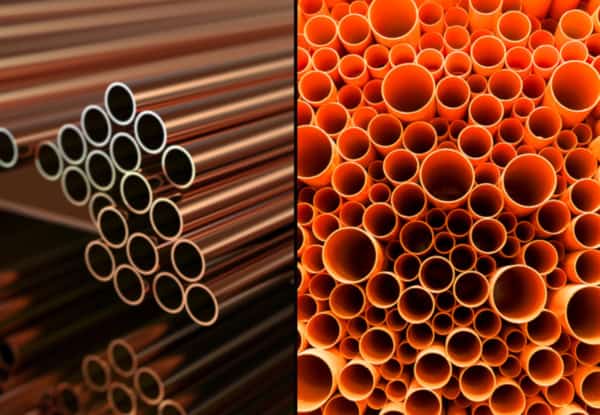Knowing the advantages and downsides of each option will help you find the right fit for your property
Every fire sprinkler system pipe material offers unique advantages, but they all have their downsides as well. Understanding the material you install—and taking proper steps to circumvent its challenges—is key to reliable and long-lasting fire sprinkler performance.
A property’s location, utility, layout, ambient temperature, and National Fire Protection Association (NFPA) occupancy hazard classification are just some of the factors that can impact the durability of pipes in sprinkler systems.
Previously, we’ve discussed piping trends in home sprinkler systems and taken an in-depth look at the benefits and drawbacks of steel for commercial sprinkler systems. In this blog, we finish our examination of the most popular fire sprinkler system pipe material for commercial properties by exploring the pros and cons of copper and CPVC (chlorinated polyvinyl chloride).
Feel free to check out our selection of piping components such as CPVC pipe fittings, hangers, sealants, and gaskets and flange packs, as well as other parts and accessories for commercial and residential sprinkler systems.
A quick review of NFPA requirements for fire sprinkler system pipe material
Before we begin, let’s quickly review NFPA requirements:
- The 2019 edition of NFPA 13: Standard for the Installation of Sprinkler Systems (3.1.1) permits listed metallic and nonmetallic materials for sprinkler pipe and tubing that meet or exceed various American Society for Testing and Materials (ASTM) standards. You can see a list of these standards in our previous blog.
- It’s key that all pipes in fire sprinkler installations have been tested by a third-party safety organization for use in sprinkler systems and are “listed” as such. Metal pipes are listed to UL 852 and thermoplastic pipes are listed to UL 1821. Listed pipes are easily identified by the listing agency’s logo.
- Some pipes could fail to meet ASTM standards but NFPA 13 permits their use as long as they are otherwise listed and installers mind any limitations in the listing (3.2.1.1 and 7.3.3.1). NFPA 13 requires manufacturers to include listing limitations in their installation instructions (7.3.2.1.2). Bottom line: sprinkler installers should carefully review a manufacturer’s instructions to account for this.
To choose a pipe material, you must determine which hazard level defines your property. UL (formerly Underwriter Laboratories) only lists pipes for hazard levels at which they can be counted upon to perform reliably.
Most offices, for instance, are “light hazard” and can use any of these pipes, but businesses that regularly stock more combustible materials have higher hazard levels and thus cannot install CPVC pipes in their sprinkler systems.
The chart below, also published in part one of our piping materials series, sums up important differences between the most popular options:
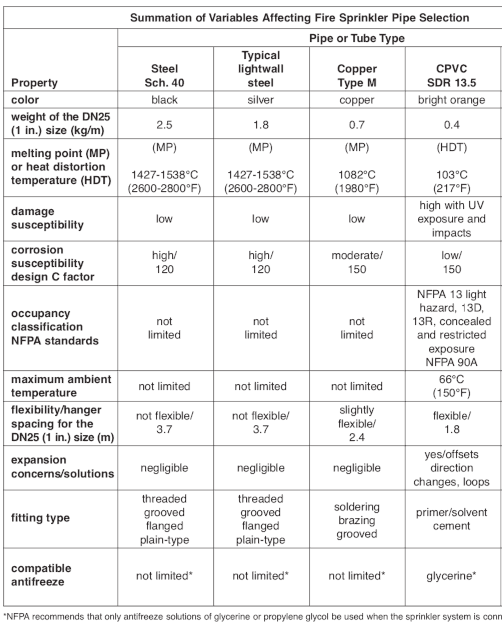
Now let’s explore the pros and cons of copper and CPVC:
Copper fire sprinkler pipe costs more, but proponents insist the benefits outweigh the price
Copper is a strong, durable, malleable metal that’s been used in fire sprinkler piping since 1961. Although it has the highest initial installation costs, copper’s proponents say its longevity, natural resistance to corrosion, and prevention of capacity loss—meaning more water can continue to flow through the pipe—outweigh the higher pricing.
Copper’s inherent resistance to corrosion and bacterial growth minimize scaling within sprinkler pipes, usually enabling the full measure of a tube’s internal diameter to remain constant throughout its lifetime. The oxide film that naturally forms on the inner surface of copper tubing creates a protective barrier, eliminating the need for frequent system flushing to prevent corrosion buildup and clogging.
This consistently smooth internal surface provides less frictional resistance than steel pipe, bestowing copper with a C-factor of 150. The hydraulic C-factor measures the roughness on the inside of pipes and its ability to impede water flow. As a result, there’s no need to increase material costs by oversizing copper pipes to compensate for the diminished flow capacity that corrosion can cause over time, which is often necessary for steel.
In fact, NFPA 13 (27.2.1.2) permits the hole size of copper pipes to be as small as ¾-inch, while steel pipes must be at least an inch in diameter. Copper fire sprinkler pipes’ enhanced flow capability also permits an increase in the permitted number of sprinklers on tubing that is 2 inches or larger, which can help keep installation costs down as well.
Don’t misunderstand that copper will never corrode. In time, pitting and scale buildup can occur within copper fire sprinkler pipes, but it happens so slowly compared to steel pipes that it’s much less of a concern. Water acidity and hardness can accelerate corrosion in copper pipes and create pinhole leaks, however, so it’s important to ensure that the pH values of water supplies remain above 7 and water softeners are used when necessary.
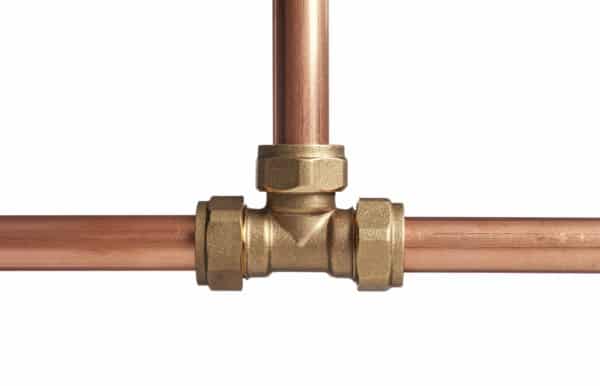
Copper’s relatively high melting point of 1980°F (1082°C) makes it suitable for use with any NFPA occupancy classification. It does not become brittle at cold temperatures like some thermoplastic pipes, though it can burst with freeze damage. And extended UV exposure doesn’t impact its performance or strength. The water-carrying capacity of copper fire sprinkler pipe remains effective throughout extreme environmental conditions and wide temperature ranges, making it useful for dry and wet sprinkler systems.
Copper types K, L, or M can be used for fire sprinkler systems, offering lighter weights and increased flexibility as the diameter shrinks. Type M pipes have the thinnest walls and type K pipes have the thickest. Copper’s lighter weight makes it easier to ship, store, and handle than steel pipe, though it is still heavier than CPVC.
From the 2019 edition of NFPA 13
16.3.5 Copper Tube. Copper tube as specified in the standards listed in Table 7.3.1.1 shall have a wall thickness of Type K, Type L, or Type M where used in sprinkler systems.
A National Institute of Standards and Technology report states that a 1-inch type M copper tube weighs .46 lb/ft. That’s less than a third of the weight of schedule 40 steel pipe (3.9 lbs/ft) and slightly more than a third of the weight of lightwall steel pipe (5.5 lbs/ft).
Copper is rigid enough to extend over long stretches without continuous supports, although it requires more hangers than steel. It is also flexible enough to be bent to sidestep obstructions, minimizing the number of joints. Like steel, it doesn’t need to be handled with kid gloves; it doesn’t easily crack or break from impacts during installation.
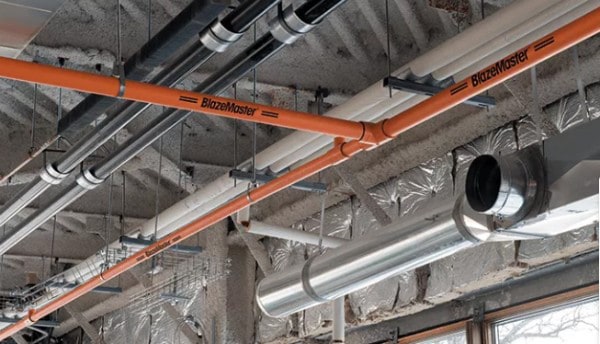
CPVC is a thermoplastic material that can be easily molded into different shapes to create pipes, fittings, and valves. Although property owners were initially skeptical of a plastic pipe’s ability to resist flame, CPVC fire sprinkler pipes have gained widespread acceptance since the first systems were installed in the 1980s.
Their inherent immunity to corrosion has had a huge impact on the fire protection industry, creating sprinkler systems that typically remain in service for at least 50 years. CPVC fire sprinkler pipes have a slick, relatively impermeable surface that keeps bacterial contamination at bay and prevents deposits from accumulating and clogging pipes. CPVC pipes also naturally resist degradation from chemicals classified as acid, alkali, or inorganic material. All of these characteristics enable water to flow through CPVC pipes with little friction, earning them a C-factor of 150—a number that is equal to copper pipes’ smoothness.
Extensive testing and approval from UL helped dispel initial fears that CPVC pipes would melt during a fire. In reality, CPVC must be forced to burn by putting the pipe in direct contact with fire, and it stops smoldering as soon as the flame is removed. Instead, a charring layer forms on the outside of the pipe, creating a thermal barrier that protects the inside and enables water to flow unheeded onto a fire.
CPVC fire sprinkler pipe also costs less than metal pipe, it’s easier to handle due its light weight, and installation is faster and safer—joints are chemically welded together by hand without flame or heavy equipment. Easier installation generally leads to labor-cost savings.
Watch this video to learn the best practices for installing CPVC pipe:
CPVC fire sprinkler type applications and limitations
CPVC pipe is only listed for light-hazard occupancies since it does start to soften at temperatures slightly higher than 200°F. The upper service temperature limit of currently listed CPVC sprinkler pipe is 150°F (65.5°C) at 175 psi (12.1 bar).
CPVC pipe can be safely used in single- and multi-family housing, as well as commercial occupancies where fires develop slower with lower heat, such as offices, schools, fire stations, hotels, hospitals, libraries without large stockrooms, prisons, museums, and nursing homes. It can also be deployed in rooms rated “ordinary hazard” that are smaller than 400 square feet and within an otherwise light-hazard setting, such as kitchens in an institutional facility.
CPVC fire sprinkler pipe is not listed for use in exposed outdoor settings, as prolonged exposure to sunlight can impact its strength. It is also not recommended for commercial dry systems since it can become brittle at cold temperatures, creating a serious safety hazard if the energy of the pressurized gas is released suddenly due to a pipe rupture. But Tyco does carry a UL-listed, CPVC-based dry pipe system for residential occupancies that aren’t always climate-controlled, like vacation homes.
It’s also important to note that not all CPVC pipes and components are listed for the same exact use in fire sprinkler systems. It’s essential for contractors to confirm via the manufacturer that a product they want to install is not only listed for fire sprinklers but also for the specific application they intend.
TFI, FlameGuard, and FireLock CPVC pipe brands are all listed for sprinklers with a respectable ASTM 05 rating, but BlazeMaster CPVC has a different manufacturing process that gives it the higher ASTM 06 rating. This means it has 25 percent greater estimated long-term strength, or hydrostatic design pressure, and is slightly less likely to burst at higher temperatures.
This difference means Blazemaster has slightly broader applications than other CPVC brands in unfinished basements. Check out our previous blog to learn more about whether this makes a difference in your installation.
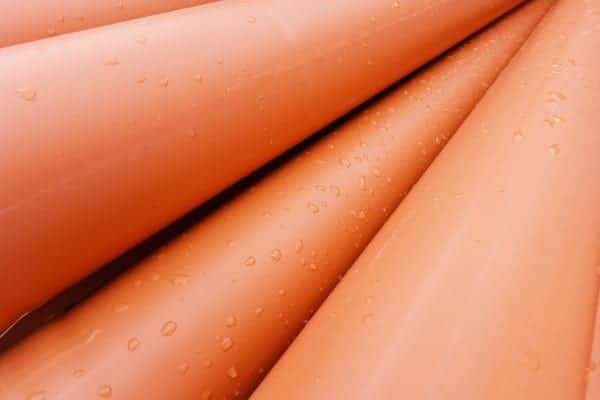
Since CPVC is a limited combustible piping material, it must be carefully installed to prevent the pipe from failing during a fire. Protecting the pipe with a layer of gypsum wallboard or plywood is a viable option. Lay-in ceiling tiles clipped in place can be used as well.
Piping systems must be carefully designed to ensure CPVC is not closely exposed to devices that can generate temperatures higher than 150°F, such as light fixtures, ballasts, and steam lines. CPVC’s flexibility and light weight also require hangers spaced at closer intervals than metallic pipe, which can increase installation costs. It’s especially important to support CPVC fire sprinkler pipe within a short distance of the drop to sprinklers to prevent movement that could impact water flow during a fire.
The relative fragility of CPVC pipe compared to metal is also a concern, with damage possible if materials are dropped, banged, or stepped on during installation. Mechanical stress caused by hanging methods or bending the pipe beyond the manufacturer’s recommended limitations can cause stress failures over time. NFPA 13 (A.7.3.2) also cautions installers to avoid construction materials that can degrade the performance of CPVC pipe, including materials used in the fabrication of sprinkler systems; additives to water supplies, cable, and wiring; and certain insecticides and fungicides.
But when proper precautions are taken, CPVC can be a safe, reliable, lower-cost alternative to metallic pipes for light-hazard occupancies—an option that limits costly corrosion issues.
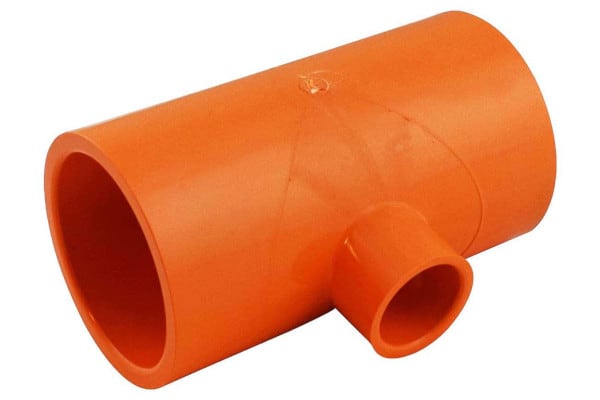
Choose fire sprinkler system pipe material wisely
Automatic fire sprinklers stand as a building’s first line of defense during a fire, controlling the flames 96 percent of the time that they operate. Choosing a piping material that’s able to meet your property’s specific needs and reliably deliver water during a blaze is essential to saving lives and avoiding property damage.
Copper is a great option in a broad range of commercial applications. It costs more than steel but resists corrosion like a champ. CPVC has even greater corrosion resistance and costs less than any metallic option—but you can only use it in residential and light hazard settings (with exceptions for ordinary hazard spaces within those settings). A qualified sprinkler contractor will know to choose wisely.
Looking to install fire sprinkler pipes? Check out our selection of piping components such as CPVC pipe fittings, hangers, sealants, and gaskets and flange packs, as well as other parts and accessories for commercial and residential sprinkler systems.
Questions about QRFS products, or need a brand or item that’s not in our online inventory? Just call us at +1 (888) 361-6662 or email support@qrfs.com.
This blog was originally posted at blog.qrfs.com. If this article helped you understand fire sprinkler system pipe material options, check us out at Facebook.com/QuickResponseFireSupply or on Twitter @QuickResponseFS.


